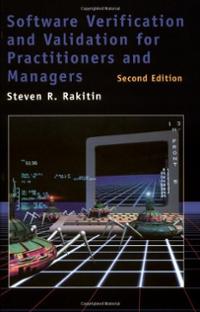
 back to Training for the Nuclear Power Industry
back to Training for the Nuclear Power IndustryRetrospective Software Verification & Validation for Commercial-grade Dedication
Many U.S. nuclear plants require replacement of parts, as well as complete components. Reductions in nuclear power plant construction have prompted some suppliers to discontinue NRC required quality assurance programs (10 CFR 50 - Appendix B), which provides guidance on the design, manufacture, and application of safety related components. Utilities now must procure qualified replacement parts from alternative suppliers or purchase replacement parts as commercial-grade (that is, systems not developed under a 10 CFR 50—Appendix B quality system) and then dedicate them for safety related use.The increased use of commercial-grade items means that training and awareness in retrospective software verification and validation is needed to ensure conformance to all applicable regulatory requirements - specifically for software that is often an integral part of commercial-grade replacement parts.
Commercial-grade dedication is a process by which a commercial-grade item (CGI) is designated for use as a basic component. An acceptance process is undertaken to provide reasonable assurance that a CGI to be used as a basic component will perform its intended safety function and, in this respect, is deemed equivalent to an item designed and manufactured under a 10 CFR Part 50, Appendix B, quality assurance program. This assurance is achieved by identifying the critical characteristics of the item and verifying acceptability by inspections, tests, or analyses by the purchaser or third-party dedicating entity.
Safety-related digital equipment is dedicated and the software verified and validated to demonstrate through audits, tests, and inspections that the equipment will perform satisfactorily for service in nuclear safety-related applications.
This course provides a comprehensive discussion of topics related to performing an effective commercial-grade dedication of digital systems that are intended for use in safety-related areas of the nuclear power plant.
This two-day intensive course is aimed at providing proven tools and techniques that can help perform an effective commercial-grade dedication in a cost effective manner. Interactive small group exercises are used to reinforce techniques discussed and encourage sharing of ideas and experiences.
This course includes comprehensive course notes and the course textbook: Software Verification and Validation for Practitioners and Managers, 2nd ed, 2001, Artech House.
Topics covered include:
Introduction
- All Software Is Defective
- Prospective Software V&V
- Retrospective Software V&V
Regulations, Standards, and Technical Reports
- 10 CFR 50 Appendix B
- NRC Reg Guides and Branch Technical Positions
- IEEE Standards
- IAEA Standards
- EPRI Technical Reports
Planning a Retrospective Software V&V Project
- Tasks and Activities
- SOPs and Records
- Commercial-grade Survey
- Project Management
- 10 CFR 50—Appendix B Requirements
Creating Software Requirements Spec (SRS) Retrospectively
- Information Sources
- Reverse-engineering Techniques
- Writing Testable Requirements
- Identifying and Removing Ambiguity
- Requirements Exercise
Software Verification Activities
- Peer Reviews
- Formal Inspections
- Unit and Integration Testing
Software Change Control
- Controlling Changes to Source Code
- Controlling Changes to Documents
Retrospective Risk Assessment
- Identifying Safety Functions Digital System Performs
- Identifying Essential Characteristics
- Demonstrating Characteristics are Met
- Abnormal Conditions and Events (ACEs)
- Risk Assessment Procedure
- Fault Tree Analysis
- FEMA and FMECA
Software Validation Overview
- Testing Principles
- Methods, Strategies, Levels, Types of Tests
- Planning and Executing
- Requirements Trace Matrix
- Software Tool Validation
Software V&V Documents and Records
- Software V&V Plan
- Standard Operating Procedures (SOPs)
- Software Development SOP
- Software Validation SOP
- Hazard Assessment SOP
- Coding Standards
- Test Procedures
- Test Records
- Document and Code Review Minutes
- Requirements Trace Matrix













